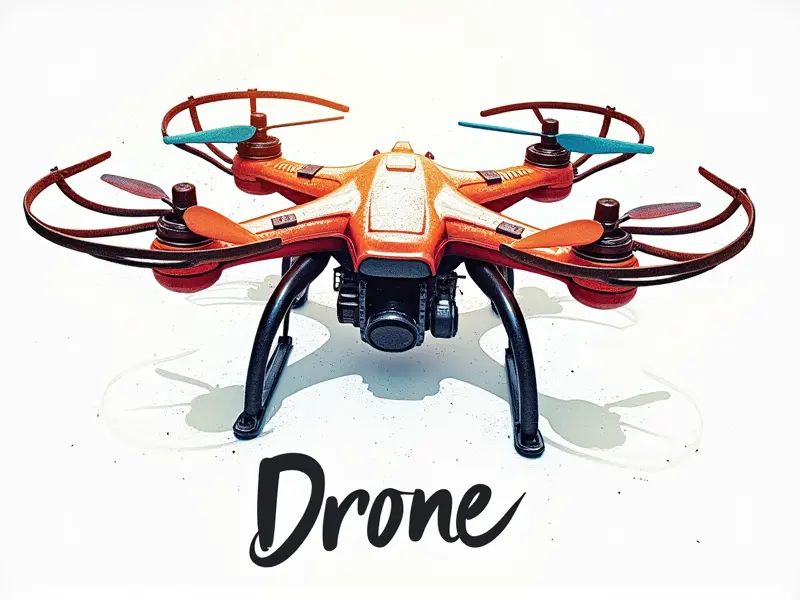Drone compass calibration

How to Calibrate Your Drone Compass Easily
Calibrating your drone's compass is a crucial step in ensuring accurate and reliable flight performance. This process helps align the drone’s internal magnetic sensors with true north, allowing for precise navigation during flights.
- Step 1: Power on your drone and ensure it is in calibration mode.
- Step 2: Move the drone to an open area away from metal objects or electronic devices that can interfere with magnetic fields.
- Step 3: Follow the manufacturer's instructions for initiating the compass calibration process. This typically involves rotating the drone in a specific pattern, such as moving it around in circles or along an X-axis.
Quick Guide to Drone Compass Calibration
A quick guide to calibrating your drone’s compass can be summarized in these key steps:
- Preparation: Ensure the area is free from magnetic interference and that you have sufficient battery power.
- Initiation: Start the calibration process by following the manufacturer's instructions, usually found in your drone’s manual or app.
- Completion: Confirm that the calibration has been successfully completed before taking off.
Why and How to Calibrate Your Drone's Compass
The primary reason for calibrating a drone compass is to eliminate magnetic interference, ensuring accurate orientation. This process involves aligning the drone’s internal sensors with true north, which enhances flight stability and navigation accuracy.
- Why: To remove any distortions caused by nearby metal objects or electronic devices that can affect the compass readings.
- How: By following a series of movements prescribed by your drone’s manufacturer, such as rotating the drone in specific patterns to recalibrate its magnetic sensors.
Top Tips for Accurate Drone Compass Calibration
To achieve optimal calibration results, consider these tips:
- Select an Open Area: Choose a location free from metal objects and electronic devices that can interfere with the magnetic field.
- Follow Instructions Carefully: Adhere strictly to your drone’s manual or app instructions for calibration procedures.
- Repeat Calibration if Necessary: If you encounter navigation issues, repeat the calibration process to ensure accuracy.
Optimize Your Drone Flight with Proper Calibration
A properly calibrated compass ensures that your drone operates smoothly and efficiently. This is critical for maintaining flight stability and achieving accurate positioning during flights.
- Stability: A well-calibrated compass helps maintain the drone’s orientation, preventing erratic movements due to magnetic interference.
- Accuracy: Proper calibration ensures that your drone accurately follows GPS coordinates and maintains its position relative to a set point.
Essential Steps for Perfecting Drone Orientation
To perfect the orientation of your drone, follow these essential steps:
- Check Calibration Status: Verify that your compass is calibrated before each flight to ensure it remains accurate.
- Avoid Interference: Keep your drone away from sources of magnetic interference during calibration and flights.
- Use Reliable Software: Ensure you are using the latest firmware updates for your drone’s software, which often includes improvements to compass calibration algorithms.
Fix Navigation Issues with Compass Calibration
If you experience navigation problems during flight, such as erratic movements or loss of signal, a faulty compass might be the culprit. Calibrating the compass can resolve these issues:
- Identify Problems: Notice signs like sudden changes in direction or difficulty maintaining position.
- Calibrate Compass: Follow the calibration steps to correct any distortions caused by magnetic interference.
Ensure Accurate Flight with Compass Setup
A correctly set up compass is vital for accurate flight performance. Here’s how you can ensure your drone's compass setup is optimal:
- Select an Appropriate Location: Choose a location that minimizes magnetic interference.
- Follow Manufacturer Guidelines: Adhere to the specific instructions provided by your drone manufacturer for calibration procedures.
The Importance of Regular Compass Calibration
Magnetic fields can change over time, so regular compass recalibration is essential. This helps maintain optimal performance and prevents potential navigation errors during flights.
- Regular Maintenance: Schedule periodic calibrations to ensure your drone’s compass remains accurate.
- Prompt Action: Address any issues immediately by recalibrating the compass when you notice discrepancies in flight behavior.
Quick Tips for Perfect Compass Calibration
To achieve a perfect calibration, follow these quick tips:
- Clear Area: Ensure your drone is in an open area free from magnetic interference.
- Follow Instructions: Strictly adhere to the manufacturer’s instructions for calibration procedures.
- Repeat if Necessary: If you encounter issues, repeat the calibration process until it is accurate.
Ensure Precision: Calibrating Your Drone Compass
To ensure precision in your drone's compass calibration, follow these steps:
- Select an Appropriate Environment: Choose a location that minimizes magnetic interference and maximizes accuracy.
- Follow Calibration Procedures: Adhere to the specific instructions provided by your drone manufacturer for calibration procedures.
Conclusion
Calibrating your drone’s compass is essential for achieving optimal flight performance. By following these detailed steps and tips, you can ensure that your drone operates with precision and reliability. Regular maintenance and adherence to proper calibration techniques will help prevent navigation issues and enhance the overall accuracy of your flights.

